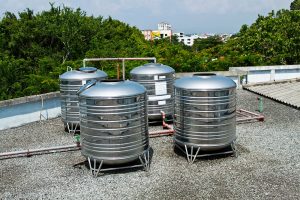Gas fireplace inserts have gained popularity as a convenient and efficient way to heat homes while adding aesthetic appeal. However, some may wonder how gas fireplace inserts compare to traditional gas logs. In this comprehensive guide, we’ll explore why gas inserts are often considered superior to gas logs and provide practical tips for starting and maintaining your gas fireplace insert flame.
Gas Inserts vs. Gas Logs:
Gas fireplace inserts and gas logs both offer the warmth and ambiance of a traditional fireplace without the hassle of wood burning. However, there are significant differences between the two options that make gas inserts a preferred choice for many homeowners.
- Heat Output:
Gas fireplace inserts typically produce more heat than gas logs. The sealed combustion system of inserts allows for better heat retention and distribution, resulting in a warmer and more comfortable living space. Gas logs, on the other hand, may not generate as much heat and can be less effective at heating larger areas. - Aesthetics:
While both options offer the beauty of a flickering flame, gas fireplace inserts often provide a more realistic and visually appealing fire. Inserts come in a variety of styles and designs, allowing homeowners to customize the look of their fireplace to suit their tastes. Gas logs may lack the realism and aesthetic versatility of inserts, as they typically consist of ceramic logs that may not convincingly mimic the appearance of real wood. - Safety:
Gas fireplace inserts are designed with safety in mind, featuring sealed combustion systems that prevent the release of harmful gases into the home. Additionally, inserts are equipped with safety features such as automatic shut-off valves and tempered glass doors to reduce the risk of accidents. Gas logs, while generally safe when properly installed and maintained, may pose a higher risk of gas leaks or carbon monoxide exposure if not used correctly.
Starting and Maintaining Your Gas Fireplace Insert Flame:
Now that we’ve discussed why gas fireplace inserts are often preferred over gas logs, let’s delve into the steps for successfully starting and maintaining the flame in your insert.
- Accessing the Panel:
Begin by accessing the panel on the bottom side of your gas fireplace insert. This panel, typically secured with magnets, allows you to reach the starter and gas line. - Checking the Gas Line:
Before igniting the flame, ensure that the gas line is open by turning the knob a quarter of the way to allow gas to pass through the line and pressurize the system. - Adjusting the Knobs:
Inside the panel, you’ll find knobs and a button that regulate the flow of gas and initiate the ignition process. Position the knobs between low and high settings to prepare for ignition. - Ignition Process:
Press and hold the button while simultaneously turning the knob counterclockwise to ignite the flame. Hold the knob in the pilot position for a few seconds before switching it to the on position to ensure a stable flame. - Maintaining the Flame:
After igniting the flame, allow it to burn for about 10 to 15 seconds before switching the knob to the on position. Some gas fireplace inserts have a pilot light that can be left on for the season, simplifying the activation process. - Using a Switch:
Consider using a switch to control your gas fireplace insert for added convenience. Switches offer a hassle-free way to turn the flame on or off, enhancing the overall user experience.
Maintenance Tips:
Regular maintenance is essential to ensure the longevity and optimal performance of your gas fireplace insert. Here are some additional tips to keep in mind:
- Visual Inspections: Regularly inspect your gas fireplace insert for signs of wear, corrosion, or damage. Addressing issues promptly can prevent further damage and ensure safe operation.
- Clear Surroundings: Keep the area around the insert clear of debris, furniture, or other flammable materials to reduce the risk of accidents and enhance safety.
- Professional Maintenance: Schedule annual maintenance checks with a qualified technician to identify potential issues, clean components, and ensure your gas fireplace insert operates at peak efficiency.
- Manufacturer’s Guidelines: Familiarize yourself with the manufacturer’s instructions and guidelines for your specific gas fireplace insert model to ensure proper usage and avoid potential problems.
In conclusion, gas fireplace inserts offer numerous advantages over traditional gas logs, including increased efficiency, heat output, aesthetics, and safety features. By following the steps outlined in this guide and incorporating regular maintenance practices, you can confidently operate your gas fireplace insert and enjoy its benefits throughout the seasons. So, sit back, relax, and let the soothing glow of your gas fireplace insert enhance the comfort and charm of your home.
.







